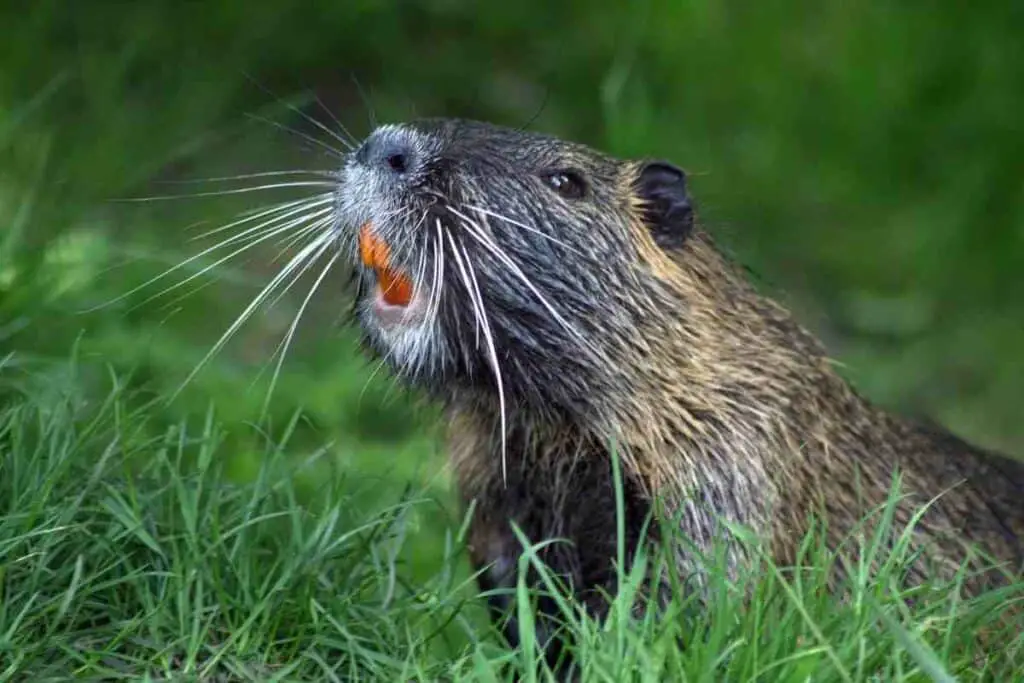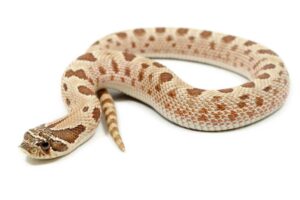When it comes to animals such as beavers, there are a lot of myths going around. Beavers are large rodents that spend a lot of time in the water, which has led many people to believe that they like to eat fish.
The thing is that beavers never eat fish, or any other animals for that matter. In fact, beavers are strictly vegetarians that eat aquatic vegetation and things such as fresh leaves, stems, twigs, and tree bark. They will also eat cattails, sedges, rushes, and water lilies, but they never eat fish or other animals.

As you’ll learn shortly, beavers’ bodies are not even capable of handling fish. So if you’re wondering if beavers eat fish, the answer is a resounding “no.”
Table of Contents
Do Beavers Eat Fish: What Do Beavers Eat?
In addition to the things mentioned in the previous paragraph, beavers will chew on just about any type of tree that’s available.
The trees they like best include aspen, cottonwood, poplar, alder, birch, willow, and maple. Beavers have very nimble front paws, and they use these paws to roll up the lily pads they find just like a cigar before they eat them.
This is just one of the more interesting facts about beavers that most people are unaware of, just like the fact that their entire diets consist of woody plants.
Unlike other mammals in the animal kingdom, beavers can digest cellulose, which makes their diet easy to tolerate.
Each fall, beavers will stockpile sticks underwater because they do not hibernate. These sticks will sustain them throughout the winter in colder climates even if the water freezes and they have no access to the nearby trees.
All winter long, beavers stay inside of their lodge, only coming out of the lodge if they need a stick to nibble on, whereby they’ll swim under the ice to get to it.
In warmer climates, this is not necessary because these places do not normally suffer with frozen water. Even though beavers don’t hibernate, they still have a plan to make it through the winter with the sticks they’ve stored away.
What Are Beavers?
Beavers are very large semi-aquatic rodents that are native to the temperate Northern Hemisphere.
The two extant species, the North American beaver (Castor canadensis) and the Eurasian beaver (C. fiber), are the most well known, and they have very stout bodies with large heads.
Beavers almost always have either brown or gray fur and long sharp incisors, as well as front feet that really look like hands, back feet that are webbed, and tails that are flat and full of scales.
The main difference between the two types of beavers is that the Eurasian beaver’s skull is more elongated and has a nasal bone opening that is more triangular in shape, in addition to a narrower tail and fur that is lighter in color than the North American beaver.

Beavers are usually found in numerous freshwater habitats, which include streams, rivers, lakes, and ponds. They take tree branches, rocks, vegetation, and mud to create lodges and dams. They will chew on the trees until it is able to be used as building material.
Lodges are used for shelter and dams impound water, so their infrastructure is important to other species as well. This is why they are sometimes called a keystone species.
As adults, the males and females live with their offspring but once the offspring get to a certain age, they help their parents repair lodges and dams, among other things.
In the order Rodentia, beavers are some of the largest animals, and they have very thick fur and lots of scales on their tails, which is one of the characteristics that make them easy to identify. Here is some additional information about the two main types of beavers:
The North American Beaver (Castor canadensis)
If you’ve ever been curious about how big a beaver gets, just take a look at the North American beaver, which is the largest rodent found in the United States.
North American beavers can grow to a height of 19 to 30 inches and weigh between 35 and 65 pounds. They are quite large indeed!
They also have a furry coat that is usually either black or a yellowish-brown color, and their incisors grow throughout their lifetime and are a dark orange color.
Their tail is very strong and helps the animal swim, keep its balance, and make a loud warning sound when there is danger nearby.
Eurasian Beaver (C. fiber)
Eurasian beavers are usually called European beavers, and they are commonly found throughout Europe and Great Britain.
Though not as large as North American beavers, the European beavers can grow from 2 to 4.5 feet and weigh anywhere from 30 to around 75 pounds.
These beavers actually have two layers of fur, with the outer layer having long reddish-brown hairs and the underlying layer being gray in color.
When it comes to the types of trees they eat, they seem to prefer birch, willow, and aspen trees. They are usually found next to agricultural land and feed on crops.
Since all beavers are herbivorous and eat only vegetation and plants, you’ll never find any information on them doing any type of hunting. They don’t hunt because they don’t eat animals; it’s as simple as that.
Back to Their Eating Habits
Now that we know the notion that “beavers eat fish” is just a myth and that they are strict vegetarians, let’s talk some more about their eating habits.
For one thing, beavers are nocturnal, which means you’ll usually find them foraging at night for their food.
But don’t think they do nothing during the daytime hours. Indeed, beavers spend a large part of their day both eating and building various structures, which of course include dams.
As far as how often they eat, that depends on many things. In general, beavers eat foliage and twigs for their daily energy needs; in the summer months, they can eat up to four pounds of food a day, with that amount going down to around two pounds during the winter months.
During periods of very harsh winters, beavers simply eat the food that they have stashed away for that purpose.
Finally, beavers do not eat fish or other animals because they aren’t able to consume meat products properly. While their large incisors are great for gnawing at tree woods, they simply aren’t practical when it comes to eating fish and other animals.
To put it simply, beavers don’t have the right biological traits to eat fish, meat, and other animals. These are just some of the reasons why you’ll never see beavers eating fish.
Conclusion
Thinking that beavers eat fish is just a myth and in fact, beavers are strictly vegetarians that eat tree bark, leaves and other green vegetation, and numerous aquatic plants.
They are hard workers and busybodies that stay active both night and day, but most of their searches for food are completed during the nighttime hours.
The North American and Eurasian (European) beavers are the two main types of beavers, and the former is the largest beaver in the U.S. Beavers do not eat fish but they still manage to have a very varied diet, and they need the energy they get from so many green foods.










